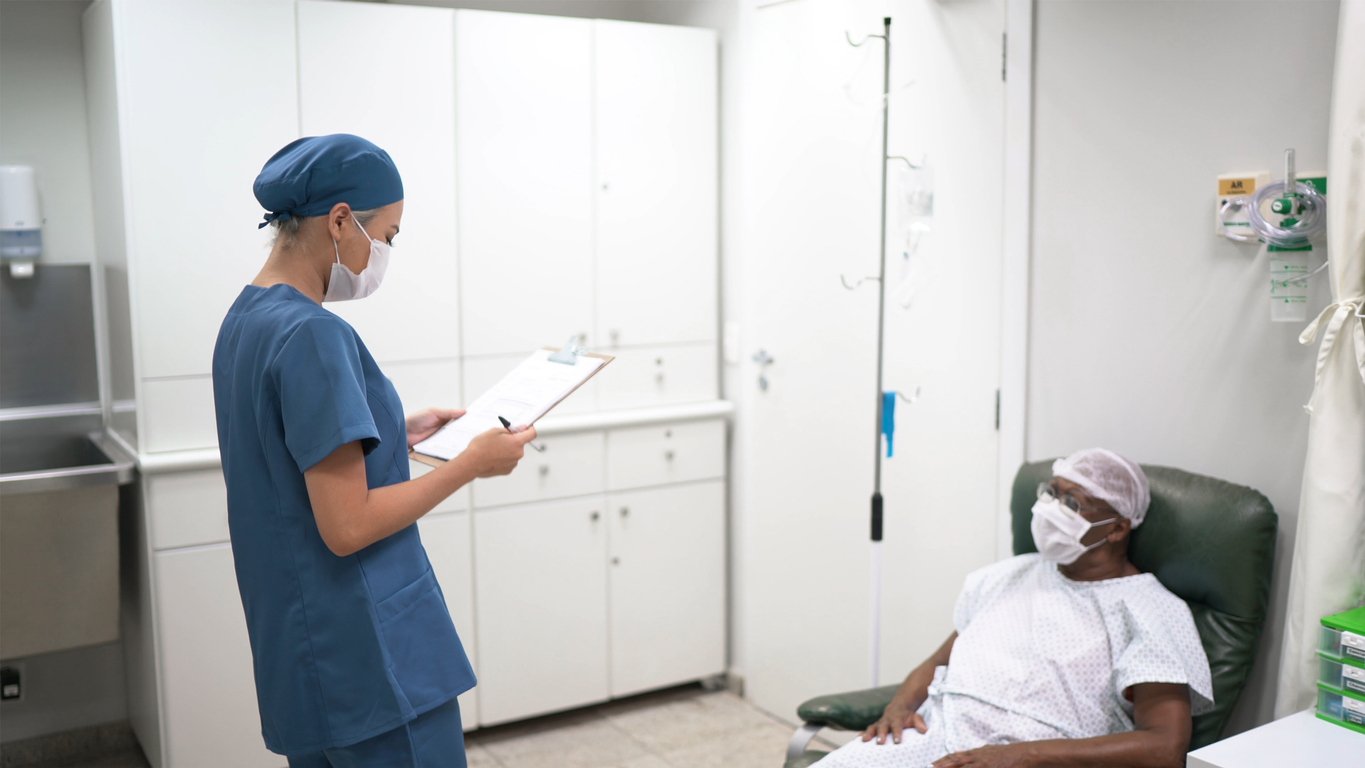Ironically as a population we are now expected to live longer and this combined with improved cancer survival rates means it is likely that more individuals will require thoracotomy surgery. Therefore we will face the challenge of dealing with a significant chronic pain issue for many years to come. As clinicians we must strive to deliver the best treatment options for our patients. We must be aware of the high probability that at least one-in-five individuals will develop post-thoracotomy pain syndrome (PTPS) so we should be aware of the physical and psychological impact it will have on those concerned. It is hoped that after this overview individuals who are not familiar with PTPS will recognise the condition sooner and appreciate that there are several treatment options.
<h3 class=”subheadMIstyles”>Clinical scenario</h3>
There are many reasons why thoracic surgery may be required. Video-assisted or open procedures for lung biopsy, pneumothorax or lung resection are techniques used daily. Very often when these individuals head home from hospital they are often left in analgesic limbo, where they struggle to deal with significant surgery and frequently with inappropriate or sometimes no analgesics planning. In the weeks that follow, the focus of care is centred on the surgical outcome, pain management is seen as ‘short-lived’ consequence of the surgery.
More often than not patients are so relieved to hear the result of the surgery the fear of persistent pain seems fictitious. In fact many feel as if it is their ‘obligation’ to suffer, as they are ‘lucky to be alive’. Yet the pain continues. It may be several weeks or months later that they attend their GP and reveal the impact the chronic pain is having on their daily function.
<h3 class=”subheadMIstyles”>What should we do?</h3>
While there are limited evidence-based clinical guidelines to help plan treatment, it is clear that if we can improve awareness surrounding acute pain management then individuals can have an improved outcome. There are many perioperative analgesic regimes and surgical techniques aimed at reducing the occurrence and severity of acute postoperative pain. This is very important in controlling the cascade of biochemical events associated with the development of chronic pain. It has proven very useful in the short-term and sets the bar for future developments.
GPs, thoracic surgeons and pain physicians must be familiar with the range of conservative and interventional options available from the simple trigger point injection, intercostal nerve blocks, advanced radiofrequency denervation and neuromodulation. Modern medicine means we have more specialist areas than ever before, however, the art of communication between these specialists is sometimes lost. While pain management is a relatively new discipline there are many treatment options to deal with PTPS. The problem is spreading the gospel!
<h3 class=”subheadMIstyles”>Diagnosis of PTPS</h3>
PTPS is not always unambiguously derived from the clinical history or physical examination, therefore additional examination or investigation is often indicated. As with any clinical situation a complete history and examination is important to understand the nature of the symptoms and to identify any possible physical signs. Unfortunately there are few patient or surgical factors that can help identify those individuals more at risk. <strong>Table 1</strong> highlights some common causes that the GP could consider.
Exclusion of red flags is a very important element of the diagnosis and investigations should focus around clinical suspicion.
<strong>Investigation could include:</strong>
a) In the event of a collapsed vertebra, an x-ray of the spinal column may sufficient. Along with a clinical history of a trauma, with or without a history of osteoporosis, the diagnostics can be completed.
b) MRI could be necessary to rule out malignant causes of the pain or metastases. This is particularly important if there is a history of malignancy, or in cases of acute development of severe pain or progressive pain symptoms including the development of symptoms suggestive of neurological impairment.
c) A thoracic x-ray can be useful in the event of thoracic wall pathology. If there are abnormalities, the patient should be referred to a pulmonary physician for further evaluation.
d) Additional work-up could include CT-scan or pelvic ultrasound if there is abdominal element to the symptoms.
e) Blood tests for biomarkers, liver function and full blood screen including coagulation and infective screening should always be considered.
This not an exhaustive list and each case needs to be considered individually.
<h3 class=”subheadMIstyles”>Conservative treatment options</h3>
Pain aggravated by movement usually indicates a role for agents such as regular paracetamol, tramadol, codeine or non-steroidal inflammatory agents once these are not contraindicated. The dual action of tapentadol (an opioid and noradrenaline reuptake inhibitor) has been shown to be very useful in providing analgesia while offering steady analgesic in PPTS. In general the choice of the agents and the dosage required needs to be established in most cases.
If features of neuropathic pain (burning/pins and needles, etc) are present then one should consider pregabalin or gabapentin as a treatment option. These agents may take a number of weeks to control the situation and may need the dose titration
Hypersensitivity over healed scar tissue would suggest a role for lignocaine patches. Transcutaneous electrical nerve stimulation (TENS) is an option for the treatment of thoracic radicular pain. Hydrotherapy and acupuncture can be considered depending on the degree of pain intensity. Physical therapy is usually applied in the form of manual therapy and can be very helpful
<h3 class=”subheadMIstyles”>Interventional pain procedures</h3>
For individuals who fail or respond poorly to oral medication pain procedures can offer the control they require to improve their functional capacity and quality-of-life. Referral to a pain consultant can often be of great value. <strong>Table 2</strong> outlines some of the possible options that exist.
For example, intercoastal nerve injection can provide 50 per cent improvement very quickly. The option of using advanced radiofrequency denervation (RF) can be considered depending on the outcome following the injections. Good results are reported following RF treatment in thoracic radicular pain management. A significant and prolonged (>12 months) reduction in pain can be expected in 52-to-70 per cent cases. The more segments involved, the effectiveness of the treatment is smaller. Other targeted injections to the facet joint, thoracic nerve roots or infiltration to the scar site can make a significant difference for each individual. Details and outcome are outlined in the reference papers at the end of this article.
<h3 class=”subheadMIstyles”>In conclusion</h3>
PTPS is a very challenging chronic pain condition that affects many patients on a daily basis. All healthcare providers working in this area ought to be alert to the possibility of this syndrome and must be prepared to recognise the treatment options. GPs, surgeons and pain physicians must be familiar with the range of conservative and interventional options from the simple intercostal blocks to neuromodulation. When treatment is utilised rationally, they have the most probability to alleviate pain and finally to improve the quality-of-life for patients.
<p class=”subheadMIstyles”><strong>Further reading</strong>
Hegarty D (2017) Post Thoracotomy Pain Syndrome: What Pain Management Options do we have? <em>J Surge Transplant Sci</em> 5(3): 1059.
Hegarty D (2017) Post Thoracotomy Pain Management: time to spread the gospel! J Surg Transplant Sci 5(3): 1058.












Leave a Reply
You must be logged in to post a comment.